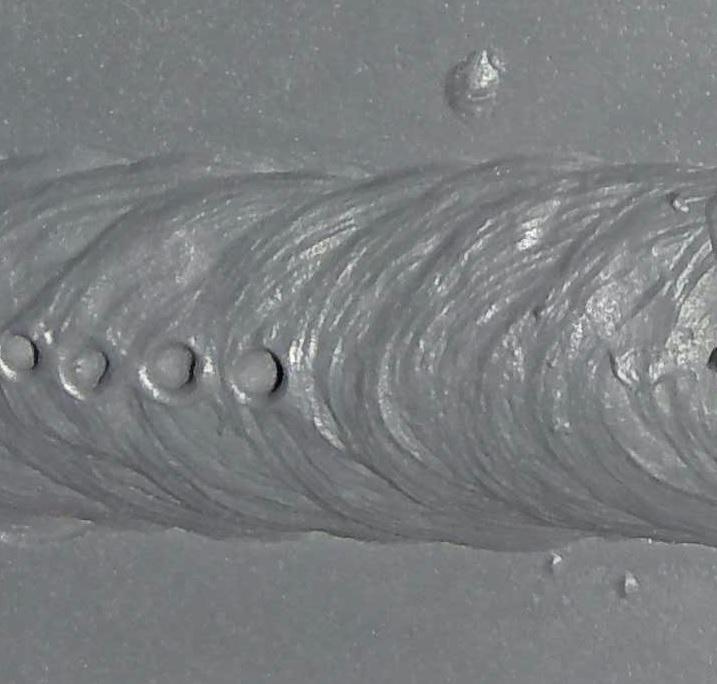Comprehending Porosity in Welding: Checking Out Reasons, Effects, and Avoidance Techniques
Porosity in welding is a persistent challenge that can considerably impact the top quality and stability of welds. As professionals in the welding market are well aware, recognizing the reasons, impacts, and avoidance techniques connected to porosity is essential for attaining robust and dependable welds. By delving right into the source of porosity, examining its damaging impacts on weld high quality, and exploring efficient avoidance approaches, welders can improve their knowledge and skills to generate top notch welds regularly. The detailed interplay of factors adding to porosity needs a thorough understanding and a positive strategy to guarantee effective welding results.
Usual Reasons For Porosity
Contamination, in the kind of dirt, grease, or corrosion on the welding surface area, creates gas pockets when heated, leading to porosity in the weld. Improper protecting happens when the shielding gas, commonly made use of in procedures like MIG and TIG welding, is unable to completely shield the liquified weld swimming pool from responding with the bordering air, resulting in gas entrapment and subsequent porosity. Additionally, inadequate gas insurance coverage, commonly due to inaccurate flow prices or nozzle positioning, can leave parts of the weld unsafe, enabling porosity to create.
Effects on Weld Quality
The existence of porosity in a weld can substantially jeopardize the total top quality and stability of the welded joint. Porosity within a weld produces spaces or dental caries that deteriorate the structure, making it more at risk to breaking, corrosion, and mechanical failure. These voids serve as stress and anxiety concentrators, lowering the load-bearing capability of the weld and raising the chance of premature failing under used stress and anxiety. In addition, porosity can also work as potential sites for hydrogen entrapment, more worsening the deterioration of the weld's mechanical buildings.
In addition, porosity can prevent the effectiveness of non-destructive screening (NDT) methods, making it challenging to spot other issues or suspensions within the weld. This can result in substantial safety and security issues, specifically in vital applications where the structural stability of the bonded parts is critical.

Prevention Techniques Summary
Given the detrimental impact of porosity on weld high quality, efficient prevention methods are essential to maintaining the architectural integrity of bonded joints. One of the primary avoidance methods is complete cleansing of the base products prior to welding. Impurities such as oil, oil, corrosion, and dampness can add to porosity, so making certain a tidy job surface is necessary. Correct storage space of welding consumables in completely dry problems is likewise important to avoid dampness absorption, which can result in gas entrapment throughout welding. Additionally, selecting the suitable welding specifications, such as voltage, existing, and take a trip speed, can aid decrease the danger of porosity development. Making sure sufficient securing gas circulation and insurance coverage is check my blog one more essential prevention method, as not enough gas protection can cause atmospheric contamination and porosity. Ultimately, proper welder training and qualification are crucial for implementing preventive procedures properly and regularly. By integrating these prevention methods right into welding practices, the incident of porosity can be considerably minimized, causing stronger and a lot more trustworthy welded joints.
Importance of Correct Protecting
Correct securing in welding plays an important function in stopping climatic contamination and ensuring the stability of welded joints. Shielding gases, such as argon, helium, or a mix of both, are frequently made use of to shield the weld pool from responding with elements airborne like oxygen and nitrogen. When these responsive aspects enter contact with the hot weld swimming pool, they can create porosity, bring about weak welds with minimized mechanical buildings.

Insufficient protecting can cause various defects like porosity, spatter, and oxidation, jeopardizing the architectural stability of the welded joint. For that reason, sticking to proper securing methods is necessary to create premium welds with minimal flaws and ensure the long life and dependability of the bonded elements (What is Porosity).
Monitoring and Control Methods
Exactly how can welders successfully check and regulate the welding process to guarantee optimal results and prevent defects like porosity? One trick method is through using sophisticated surveillance technologies. These can include real-time surveillance systems that provide responses on specifications such as voltage, present, take a trip speed, and gas flow prices. By continually keeping track of these variables, welders can determine inconsistencies from the excellent conditions and make immediate changes to stop porosity formation.

In addition, implementing appropriate training programs for welders is crucial for keeping an eye on and managing the welding process efficiently. What is Porosity. Informing welders on the significance of keeping regular criteria, such as proper gas protecting and travel rate, can help protect against porosity problems. Normal evaluations and accreditations can also make certain that welders are skilled in tracking and managing welding procedures
Moreover, my website the use of automated welding systems can improve tracking and control capacities. These systems can resource specifically control welding parameters, reducing the chance of human mistake and making sure constant weld top quality. By incorporating innovative surveillance modern technologies, training programs, and automated systems, welders can effectively keep track of and manage the welding procedure to lessen porosity flaws and attain top quality welds.
Verdict
